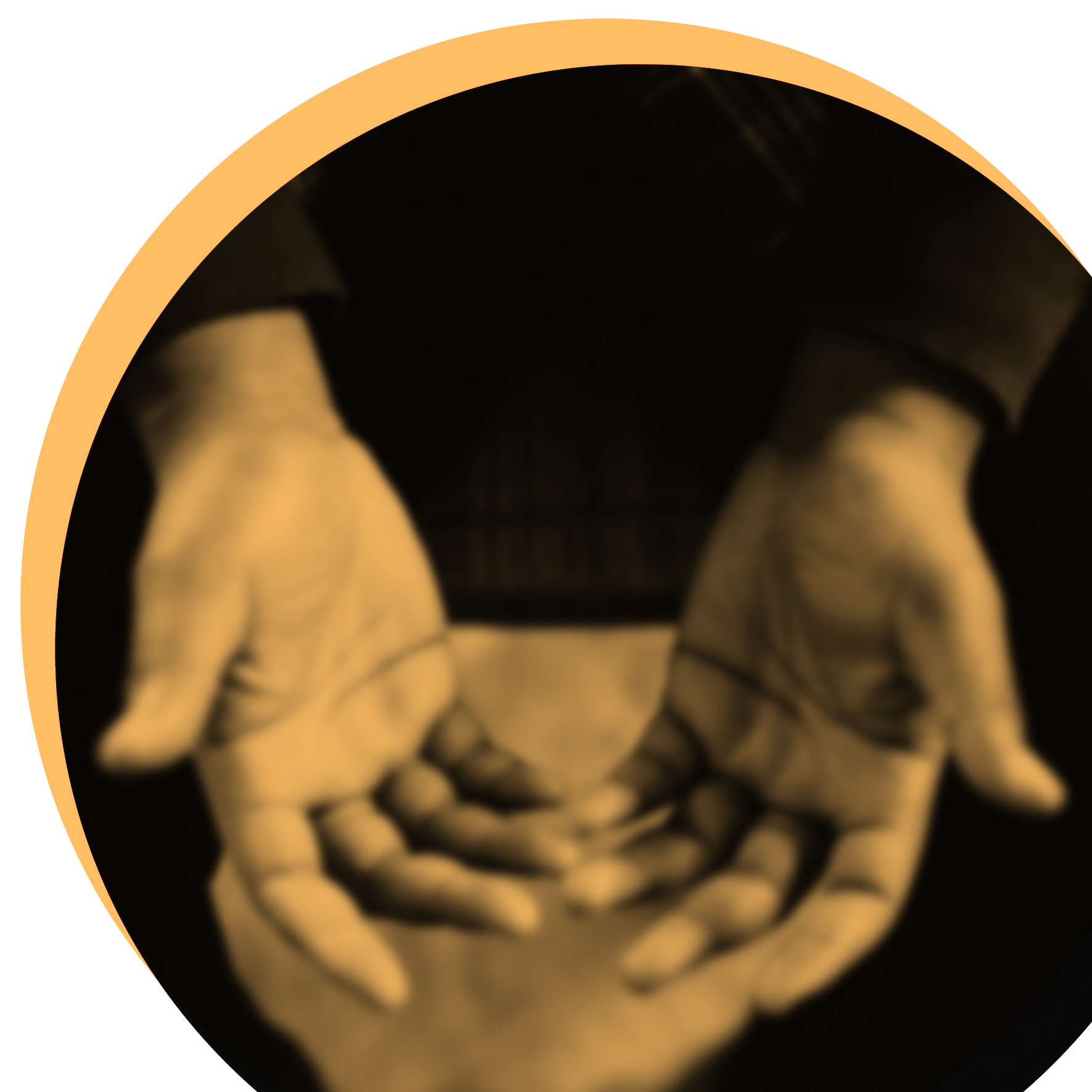Circles of Change
“Restorative justice” views crime more as an act against another person and the community than a violation of the law. And it maintains that punishment alone doesn’t change behavior. Courts nationwide are trying community-centered discussions based on these principles as alternatives to incarceration.

A 12-year-old uses an illegal drug, or steals an item from a store, or breaks a window in a home. What is the best way to deal with these crimes? What if an adult commits these offenses? Along with holding offenders accountable, courts also consider rehabilitation and protecting the public from future crimes.
With lower-level offenses, many Ohio courts have instituted diversion programs, especially for juveniles. One type of diversion, used with both adults and juveniles, is to have the offender engage in a dialogue with members of their neighborhood and, if possible, the victim. These dialogues look deeper than the specific offense – to repair the harm the offender caused, to weigh the ripple effects of the actions, and to enlist the broader community in steering the offender toward a more productive path.
For one group of youths, the assignment was cleaning up broken glass at a business and paying for a new window. Work was found for a teen who had done something illegal to buy food for his family. Another was required to research local curfew laws and find out why they exist. In each case, the decisions about how to address the youth’s crime resulted from a discussion with members of the community in a restorative justice circle.

“We don’t talk enough to each other. We have to begin to ask why things are the way they are, and you can get to the restorative process.”
Taking Responsibility, and Thinking Bigger Picture
Restorative justice circles attempt to look beneath, and beyond, the crime that was committed, making them a broader approach than, for example, typical mediations. Without ignoring the importance of accountability, the focus is on the healing of relationships and taking the long view, for the good of the community, the victim, and the offender.
Punishment and incarceration often don’t address underlying problems – financial struggles, homelessness, family issues, and hunger – and sometimes even compound them. For juveniles, state studies show that re-arrest rates within one year of release from detention or a correctional institution average 55 percent, while reincarceration and reconfinement within a year average 24 percent.
To try to shrink those numbers, Judge Elizabeth Gill instituted restorative justice principles and circles in the Franklin County Juvenile Court in 2013. Judge Gill pointed to her roots in restorative justice – her mother was involved in victim-offender mediation with prisoners – as the reason she values the philosophy.
“The circles are ways to heal from offenses, particularly for children,” she said.
Youths Assessed before Directed to Restorative Justice Program
For juveniles potentially headed to court in Franklin County, prosecutors screen those brought in for first-time offenses and recommend youths they think are good candidates for the circles, said Julie O’Reilly Troth, the court’s deputy director of juvenile programs and services.
Judge Gill and court staff also identify youths for the program. Not all juveniles are invited to participate, the judge notes. Those with low-level offenses, such as disorderly conduct or theft, are the most likely referrals.
It’s similar in Lucas County Juvenile Court. Prosecutors, case officers, probation staff, and a county treatment center refer minors for restorative justice circles. The court’s coordinator for the program meets with the juvenile and the family, screening them for needed services and assistance, and determining whether the child is open to taking responsibility for the harm caused.
Judge Denise Navarre Cubbon said the court may informally direct the child to a restorative justice circle, or make a formal recommendation as part of the court’s disposition, or sentencing, in the case.
The Junction Coalition, the juvenile court’s community partner in Toledo, organizes and conducts the circles for those the court refers. Ideally, though, juveniles in trouble are identified and find guidance from organizations like Junction before they reach the court, Judge Cubbon said.
“Circles are more often used as a diversion before a juvenile gets to court,” she said. “It’s our goal to handle only those youth and matters in court when court intervention is required.”
For youths referred through the court, the probation department first contacts the victim and explores whether a circle would be productive.
The graphic illustrates differences between the traditional, punishment-focused model of justice and the restorative justice perspective. While retributive justice is rooted in an adversarial process, the restorative approach relies on victim empowerment, making amends, and consensus-building.
Those Harmed Asked to Take Part
Judge Cubbon notes the importance of not losing sight of those who were harmed.
“We need to be hypervigilant not to revictimize the victim,” she said. “We tiptoe through the process when victims participate.”
The judge, formerly a prosecutor for 23 years who ran the office’s juvenile division, finds, though, that victims in cases involving juveniles are more open to participating.
“Victims want the juvenile not to do the same thing again. They focus on wanting the youth to change the behavior,” she said.
Alicia Smith, the Junction Coalition’s director, stated that victims participate in approximately 60 percent of the circles.
“It creates a dialogue,” Smith said. “Victims may start seeing that some offenders live a rough life. They develop empathy. But just because a victim understands more about the youth’s circumstances doesn’t mean the youth won’t be held accountable.”
In Franklin County, many of those harmed by a person’s actions aren’t comfortable taking part in a circle, Judge Gill said.
“Victims are contacted and invited, and I want them to participate, but they often don’t,” she said.
In those instances, community volunteers represent the victims' perspectives, said Rachelle Randolph, Franklin County Juvenile Court’s restorative justice program coordinator. Randolph encourages nonparticipating victims to submit a statement describing the impact of the offense. That helps youths understand the effect of their actions, she said.
Circles Grounded in Each Youth's Neighborhood
Restorative justice circles for central Ohio juveniles bring each youth who has committed an offense into a discussion with people who live in the youth’s community. Before the COVID-19 pandemic this year, they met at a neighborhood location.
“We want to keep kids in the community and make them feel a part of their community, a connection to it,” Troth said.
Randolph explains that the program is set up in seven neighborhoods. The community volunteers, who live in those areas, meet qualifications, submit to a background check, and are trained in the approach. A representative from the court’s community partner – the Family and Youth Law Center at Capital University Law School – also participates. The youth’s parent or guardian must attend as well.
The process starts with an initial meeting – now held by videoconference. Randolph and four to six community volunteers gather background from the young person, asking: What were you thinking about when you committed that offense? Who was affected by what you did? How do you want to repair the harm you caused?
The group also takes time to get to know the minor – to develop a relationship and learn about the youth and his or her interests, Randolph said.
The youth and parents then step outside the room. The youth puts together their ideas about how in the next month to take responsibility for their actions, while the group develops its plan with assignments that are tailored to each child.
In August, a Columbus circle instructed a youth to write an essay about federal and state laws regarding marijuana possession and another about local curfew laws and why they were adopted. Others have been assigned to write songs or poems to express their feelings, to work at community recreation centers, to help nearby elderly residents with tasks, and to take part in community service.
The youth has 30 days to complete the activities and assignments. At the end of the period, another meeting with the circle takes place. The juvenile reports on the required activities and may read essays or assignments aloud to the circle members.
“There is such ownership taken, and you can see that they’ve matured through the process,” Randolph said. “They’re so proud to present.”

“Juvenile issues are often connected to family issues, such as trauma and poverty. For many, this process brings parents back in focus.”
Circles Bring Together Multiple Youths for Weeks
Toledo’s Junction Coalition gathers up to 10 to 15 youths with their parents in each circle, Smith explains. There are two “circle keepers” from the community. Smith said these facilitators include college students, law enforcement officers, and artists.
The program lasts eight weeks, and each youth must attend two-hour sessions, three days a week. Smith said the first hour is educational development, and the second hour is the circle. Every juvenile must complete five hours of community service. But the juvenile court often mandates more hours, Smith notes. Recently, kids prepared meals for people homebound because of the pandemic, and delivered water to elderly neighbors.
One teen joined a circle after he was caught selling marijuana. The 14-year-old stated that he was selling the drug to make money to buy food for his family. He thought there was nothing negative about what he was doing.
“He said, ‘I know you love us, Miss Alicia, but that love doesn’t feed us,’” Smith said. “A lot of problems we see have to do with basic needs and because they want to feel a part of something.”
To respond, Smith said Junction launched a workforce program. The circle assigned the teen to a program called Grasshoppers, in which youths are paid to mow lawns. In winter, they shovel snow. The group also worked to help the teen understand the impact of his actions on those to whom he sold marijuana, on his family who had to adjust their schedules for his court dates and other requirements, and on his peers, Smith said.
Many Youths Complete Goals Set by Circles
The circles are generating encouraging results. In 2019, 176 youths in Lucas County were referred by the court to the restorative justice program, and 69 percent of the cases were resolved in a manner satisfactory to the person or persons harmed. In Franklin County last year, 109 minors between ages 11 and 18 participated in restorative justice circles. Of those, 87 completed the program, and their court cases were closed. Excluding 13 youths whose cases carried over into 2020 because of late-year starts, that’s 91 percent who stayed out of the formal court process. For those unwilling or unable to embrace the opportunity, courts can return the juvenile's case back to the justice system.
From Red Hook, Brooklyn, in New York to Oakland, California, though, restorative circles are producing positive outcomes, for youths and adults. There are examples in Illinois, Michigan, Wisconsin, and Missouri as well.

“There is such ownership taken, and you can see that they’ve matured through the process.”
Tracy Collier, a circle volunteer for a Columbus neighborhood, notes that when she was a social worker, she saw people who were simply homeless end up incarcerated. As a teacher, she watches youths who are suspended from school get into more trouble, too often leading to imprisonment. These frustrating social issues drive her to give her time to restorative justice circles.
“It’s a prison pipeline issue for me,” Collier said. “The last thing we need is more incarceration. More restorative practices are what we need.”
“With traditional punishment or detention, juveniles don’t have the opportunity to be heard,” Smith stated. “In detention, they can’t correct their actions, and they have this belief that they have to be hard. They can’t show they are learning or feeling anything.”
“The criticism I hear most often about circles is, ‘You’re being too lenient,’” she added. “But we don’t talk enough to each other. We have to begin to ask why things are the way they are, and you can get to the restorative process.”
Teen Takes Time to Understand Offenses
At the end of 30 days, a teen read to the community members and Randolph her thoroughly researched, detailed, multi-page essays related to her offenses. The teen also read out loud the apology letters she had written to a parent and a sibling for her actions. Her words were thoughtful, and the effort she put into the work seemed evident. She reported on finding new healthy activities to fill her time and job hunting. After community members asked the teen and her parent a few questions, the pair stepped outside of the room so the others could discuss her case.
The four Franklin County circle volunteers had spent 45 minutes in the initial meeting building a plan for this youth to address the harm her actions caused and to redirect her toward more positive activities. One volunteer mentioned that the teen’s presentation that day showed she took the plan seriously, and another noted that the young woman did everything they had asked.
The teen and her parent were called back into the room for the happy news that the circle members agreed to close her juvenile court case. She will have no record.
Doug Althauser, who participates in circles through Capital University Law School, said the process doesn’t work for some juveniles because either they are too young to understand the work required or their parents don’t bring them to the sessions, even with multiple court reminders.

“We want our circles to meet our community needs – restorative justice circles Toledo-style. Take these principles and make them work in your community.”
Judge Gill said the circles fortunately have re-engaged many more parents – improving life not only for the youths in trouble, but also for the family.
“Juvenile issues are often connected to family issues, such as trauma and poverty. Parents are frustrated and disengaged,” she said. “For many, this process brings parents back in focus.”
And Randolph said the parents are grateful.
“At the end of the process, one parent told us, ‘You took the time to listen. I have learned how to parent differently, and now my child and I have a relationship,’” she said.
Contagious Nature of Restorative Justice
Restorative justice has even caught on outside the courtroom. Judge Gill noted that the techniques are used informally by the court’s probation department and to resolve problems at the juvenile intervention center. Staff also conducts trainings for local schools.
While the core principles are the same, Toledo and Columbus structure their circles in distinctive ways. That flexibility is a strength.
“We want our circles to meet our community needs – restorative justice circles Toledo-style,” Judge Cubbon said. “Take these principles and make them work in your community – to create circles Cleveland-style, or circles Bowling Green-style.”
Restorative justice circles require courts to commit more hours, coordination, and effort than it would take to accept a plea bargain or incarcerate someone, but it's an endeavor aimed at curtailing future crime and fostering good outcomes for the long term. And for the youths in trouble who are at the center of their community’s circles, they encounter a process designed to look at their individual needs and difficulties, to find solutions specific to them and their families, and to restore a positive connection with their communities.
“We want them to get on the path to becoming the best versions of themselves,” Randolph said.
CREDITS:
Design: Ely Margolis
Web: Erika Lemke
